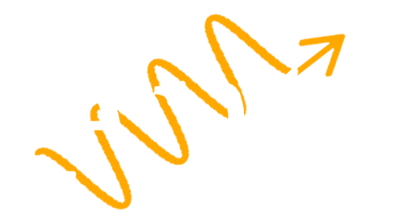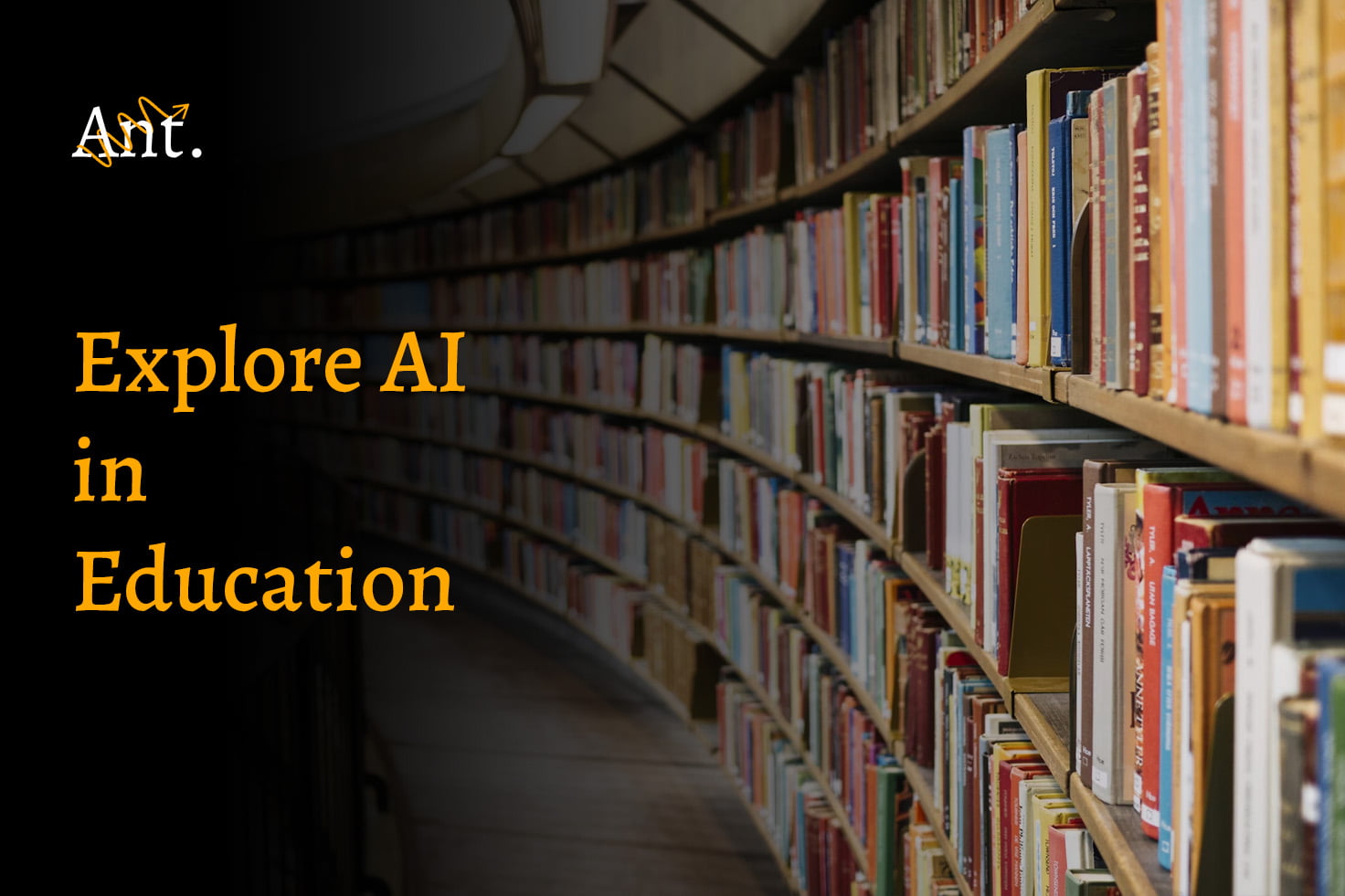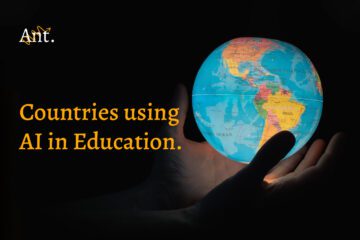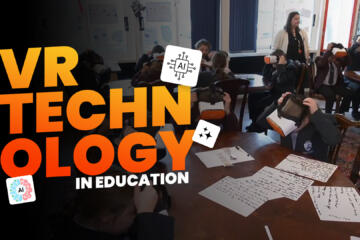Some recent studies show that AI-powered adaptive learning platforms (like DreamBox Learning) can improve the test scores of students by up to 62%.
So if our educational systems start using AI in education how they can improve the output of students?
We know the potential of AI in education, but how we can use it to improve the output of students? Let’s learn…
How exactly AI is changing the education
In our traditional teaching method, we’ve typically one teacher in the classroom to teach 10 – 30 students who can’t give personalized feedback to each student.
Artificial intelligence has solved this problem by providing analysis of student’s behavior & give them personalized feedback.
Multiple Edtech companies build digital devices (tablets/laptops) with AI adaptive learning software & provide them to schools, these types of software observe the behavior of the K-12 students and provide them with personalized, tests, and even career suggestions.
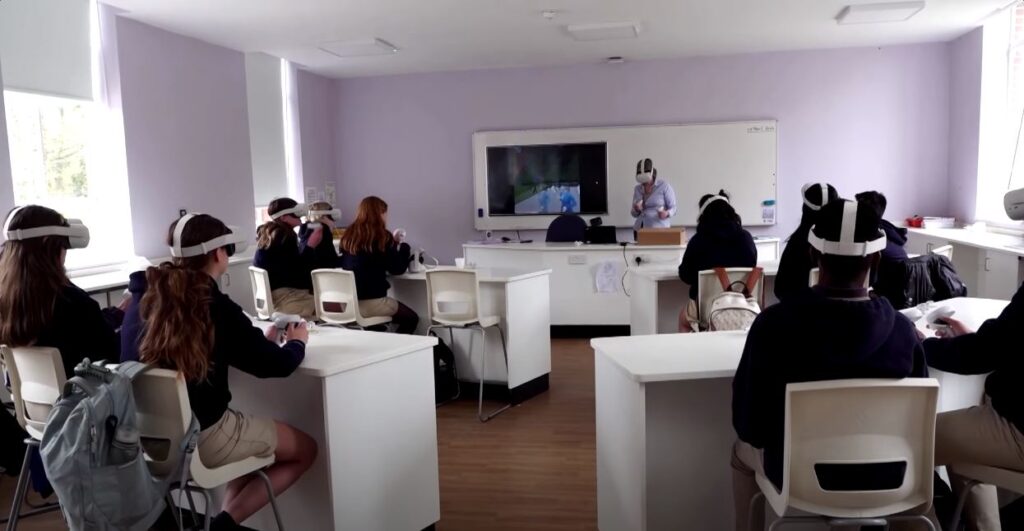
Many AI-powered adaptive learning platforms are designed for K-12 education, offering students a more engaging and effective learning experience.
The usage of AI is changing digital education by giving teachers super-smart helpers. These AI can handle routine tasks like grading and giving quick feedback, freeing up teachers’ time to focus on guiding students.
Will AI replace teachers?
According to Bernard Marr AI will not replace teachers but instead act as a tool to augment teachers and make their lives easier.
Jill Watson Developed an AI program at Georgia Tech, Jill Watson functioned as a virtual teaching assistant for online courses.
It helped students by answering their questions about the material and providing schedule information, potentially freeing up professors’ time and offering students 24/7 access to support.
This is amazing, students can interact with a virtual teacher on their mobile phones or laptops.
Day of AI event
The new version of ChatGPT, an AI tool capable of generating human-quality writing, has sparked discussions in classrooms about the societal impacts of Artificial Intelligence.

The “Day of AI” event, anchored by the White House’s “Blueprint for an AI Bill of Rights,” provided a springboard for educators to integrate AI discussions into K-12 curriculums.
Benjamin Herold says that we should grow the focus on AI literacy to students and emphasize the need for them to understand the technology that is increasingly shaping various aspects of life, from education (over 50% of teachers in the US already use some form of AI) to medicine and agriculture.
Personalized learning
AI analyzes student data to identify strengths and weaknesses, then personalizes lessons and homework to address each student’s specific needs.
Adaptive Learning Platforms create dynamic learning paths for students for better outcomes.
Enhanced engagement
AI can power engaging games, simulations, and virtual reality experiences that bring subjects to life and help in understanding the history or complex subjects (i.e. Biology, etc).
AI tutors can answer student questions and provide feedback 24/7, keeping them motivated and on track.
Teacher support
Nearly half of students and teachers agree that AI has improved the student learning experience through features like personalized learning and innovative grading systems
AI automates tasks like grading multiple-choice tests and scheduling, freeing up valuable teacher time for more personalized instruction and interaction with students.
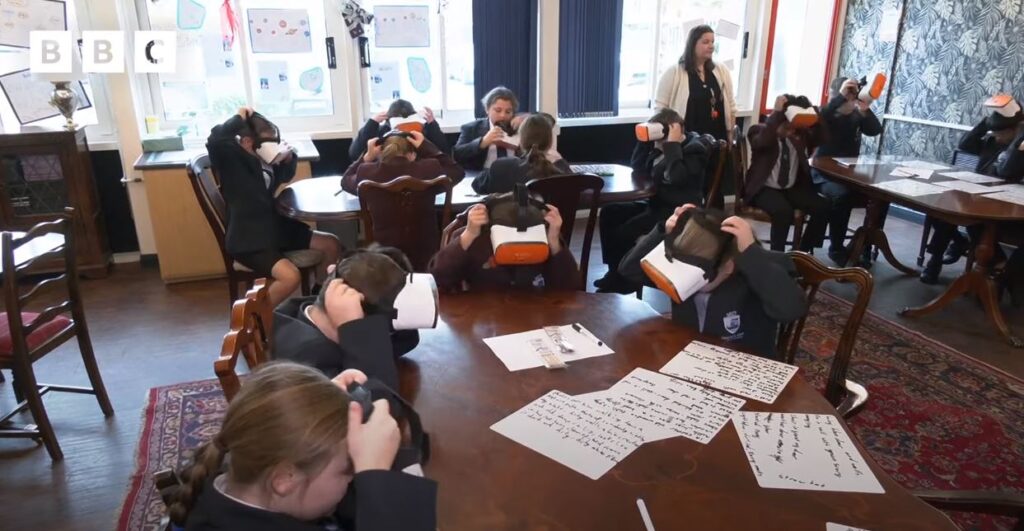
It helps teachers identify areas where students might be struggling and adjust their teaching strategies accordingly.
AI tutors might be answering questions anytime, or Virtual learning environments (VLEs) powered by AI can take a tour of historical events.
Practical examples of AI in education
AI has been around for a while, but tools like ChatGPT made us realize how powerful it can be.
The following are the particle or real-life examples of AI and some of the key players in the field of AI in the educational sector.
Research institutions and academia
- Massachusetts Institute of Technology (MIT) Open Learning Initiative introduces research on AI-powered learning platforms like the MIT OpenCourseWare.
- Stanford Education AI Group Conducts research on AI applications in education, focusing on areas like personalized learning and intelligent tutoring systems.
- Carnegie Mellon University Using AI for personalized learning, intelligent feedback systems, and educational games.
Non-profit organizations
- AI4ALL Works to make AI education and opportunities more accessible to underrepresented groups, focusing on K-12 students and higher education.
- The Education Trust Advocacy organization promotes the effective use of technology in education, including AI.
- International Society for Learning Technologies (ISLT) Provides a forum for educators and researchers to share knowledge and best practices on using technology in education, including AI.
Private companies
- DreamBox Learning Develops an AI-powered adaptive learning platform for personalized math learning (K-8).
- Duolingo uses adaptive algorithms to personalize language learning experiences for users – Amazing app BTW.
- McGraw-Hill ALEKS It offers an AI-powered adaptive learning platform for math and science, catering to K-12 students.
Government agencies
- U.S. Department of Education Office of Educational Technology Provides resources and guidance on integrating technology, including AI, into classrooms.
- European Commission Directorate – General for Education and Culture Supports research and development initiatives on AI for education within the European Union.
AI vs traditional methods of learning
The traditional methods of learning are getting changing. While old-school ways have worked for ages, AI is a cool new technology for digital education that can change learning for each student.
The biggest change compared to traditional vs AI teaching is personalization.
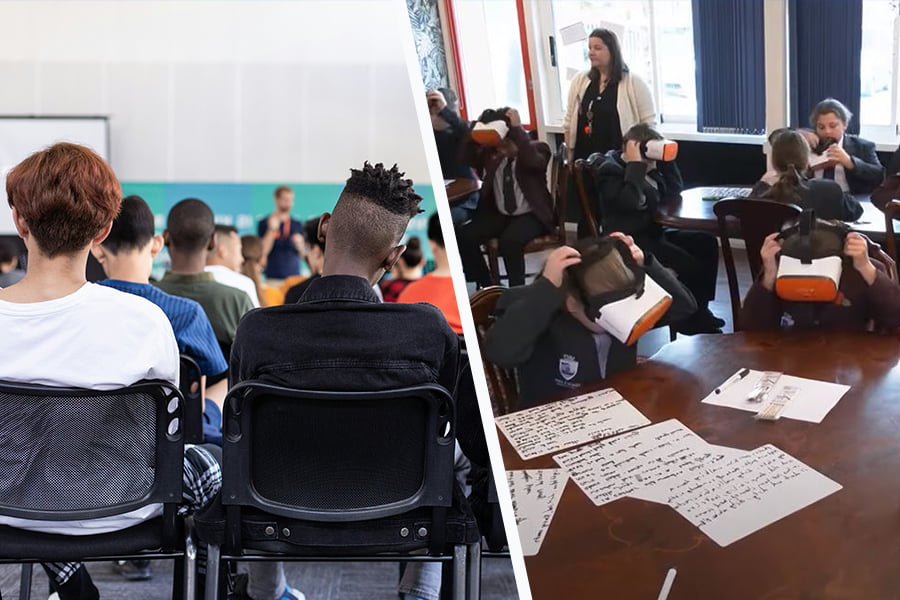
AI programs/software can look at a student’s output and make lessons, homework, and tests just right for them. This keeps students interested and learning new things.
AI can give fast feedback to students when they have any concerns. AI tutors give instant answers and help, so students learn faster.
AI is a helper, not a replacement for teachers. Teachers are great at helping students think for themselves, be creative, and get along with others. The best way to learn might be using both teachers and AI together, making learning more personal, fun, and effective.
Free AI tools for students help you in digital education
Lots of cool new tools use machine learning and AI to speed things up and save you time!
You might know ChatGPT, but check out Google Gemini (I love it!) and Prexipility. They use the latest data, unlike ChatGPT.
Here are some tools to make your tasks easier:
Pdf AI

This tool’s name suggests it is related to AI-powered PDF manipulation. I use pdf.ai to summarize PDFs, extract key information, or even ask questions directly about the content of a PDF document. The great thing is this tool will provide the page name of the PDF.
How pdf.ai can help you?
Pdf.ai summarizes content, extracts key points, and even answers your questions directly about the PDF. Find info faster and save study time.
Gamma AI

With a name like Gamma, which is a letter in the Greek alphabet often used in math and science, this tool likely focuses on scientific data analysis. I use Gamma.ai to analyze data sets, visualize results, or even generate hypotheses based on the data.
How gamma ai can help you?
Gamma.ai analyzes your data, creates charts, and helps you form ideas based on the findings. Makes data analysis easier for science projects or research papers.

Notion AI
Notion is a great tool for organizing stuff, but Notion AI is next-level. It uses smart AI to boost your note-taking and organization.
How Notion AI can help you?
You can use Notion in meetings to take notes automatically, which saves you a lot of time and catches every detail with accuracy. It can even study how you work and suggest better ways to organize the stuff, making you study more productively.
Otter AI

Otter.ai uses smart AI technology to transcribe what’s said in real-time. Focus on listening while Otter.ai grabs everything.
How Otter.ai help you?
Otter.ai gives you a clear, searchable record of any conversation. Easily find key points, catch what you missed, and even share the transcript with others.
Rows

The word “rows” suggests data organization. Rows.com is a spreadsheet or database tool. I use rows.com to organize my study notes, create project timelines, or track my learning progress.
How rows ai can help you?
Rows.com (likely a spreadsheet/database tool) helps you organize notes, plan projects, and track your learning progress – all in one place.
Tome

Tome refers to a large book, so tome.app might be a reading or writing tool. I use tome.app to improve my writing style, paraphrase text, or even generate creative writing prompts.
How rows ai can help you?
Tome.app helps you write better, paraphrase text to avoid plagiarism, and even generate creative writing prompts to overcome writer’s block. Write with more confidence and clarity.
Turnitin

This widely used tool focuses on academic integrity. It uses AI to detect plagiarism in student writing, ensuring originality and proper citation.
How Turnitin ai help you?
Turnitin checks your writing for plagiarism, ensuring your work is original and properly cited. Submit assignments with peace of mind.

AI Lesson Plans
This tool uses AI to streamline lesson plan creation for teachers. It allows educators to input topics and learning objectives, and the AI generates a framework for engaging and effective lesson plans, saving teachers valuable time.
How ai lesson help you?
This tool lets teachers input topics and learning goals and then uses AI to generate engaging and effective lesson plans.

StudyCards App
This app uses ChatGPT to create flashcards for memorization. Students can input their study materials and the app generates flashcards with effective prompts and answers, improving information retention.
How rows studycards ai can help you?
The StudyCards App uses AI to generate flashcards with strong prompts and answers based on your study materials. Improve memorization and spend less time cramming.
The good stuff about AI
The biggest advantage of Artificial Intelligece is it created so much jobs opportunities and way to earn more.
Students can earn easy if they learn to use this AI technology wisely like Joe Popelas a 20 years old boy have made 1 million dollars by making eBooks with the help of ChatGPT & you can do that as well. If you’re interested in that learn how to make and sell eBooks with Aurelius Tjin.
Likewies here are some of benefits of AI on us:
- More jobs: According to Statista AI could create 97 million new jobs globally by 2025 in programming jobs like Data scientists, AI developers, robotics engineers, and cybersecurity specialists.
- Personalized plans: AI can create personalized plans just for you according to your behavior, AI can track how you learn and adjust lessons and resources to your strengths and weaknesses. It’s like having a personal coach.
- Teacher’s helper: Grading papers and attendance can take a lot of time, but AI can handle those chores, freeing up teachers’ time to focus on what they do best: guiding and inspiring students.
- AI is available 24/7: If you need help with homework at late night AI tutors are always available to provide on-demand learning whenever you need it.
- Learning via AR/VR: Now AR/VR technology is being used in education to teach students history through virtual visits the places. It makes learning interesting with interactive games and simulations that bring complex topics to life.
The not-so-good stuff about AI
Bernard Marr says that AI is not a threat to teachers but it can be a great tool to improve education. AI can be used to personalize the learning experience and deliver a better education to students.
However, AI can’t give the kind of encouragement or care that a real teacher can, and some people worry that it might take away jobs.
Sometimes, AI might not be fair or might make mistakes. It can cost a lot to bring AI into schools, and if we depend on it too much, students might not learn to think for themselves.
Here are some of the Disadvantages of AI in Education:
- AI Overload: Teachers relying too much on AI for grading or teaching might forget the important stuff, like helping students think for themselves and be creative.
- Unfair Learning: AI can learn from mistakes, but those mistakes can be biased. This might mean some students don’t get the same chance to succeed.
- Going Solo: Lots of AI for learning means less chance to work together and make friends. Social skills matter as well.
- Teacher Help, Not Replace: AI won’t replace teachers, but it might change their jobs a bit. Some teachers might worry, but new skills can help.
- Job Cuts? Like new AI technology Devin might take beginner programmers’ jobs As AI takes over some tasks, there’s a worry that teachers and other education staff might lose their jobs.
Side hustle or earn money using the AI
As AI is making life easier for everyone in the world likewise AI is making easier the money making process.
People are leveraging AI tools & making tons of dollars by creating and distributing content, designing websites, and even developing virtual personalities – all with the potential to generate income.
Following I discussed the practical side hustle to make money in 2024 — and these are future proof because we’ll use Artificial Intelligence to help us:
eBooks
If you ask me the best to earn side income using AI tools — that is eBook making, you’ll write an eBook (that will solve someone’s problem) and sell it again and again. like Joe Popelas a 20 years old boy has made 1 million dollars by making eBooks with the help of ChatGPT & you can do that as well. It’s as simple as:
- Find Problem or Topic: Identify a niche you’re passionate about and with market demand. Use AI for keyword research to understand what people are searching for.
- Find Your Audience: Research your target audience’s demographics and interests to tailor your content effectively.
- Write with AI Assistance: Use AI tools for brainstorming chapters, generating drafts, and fact-checking information.
- Polish and Design: Edit and proofread your work meticulously. Utilize AI design tools for formatting, but maintain creative control over the layout and visuals.
- Publish and Sell: Choose an ebook publishing platform and craft a captivating book description. Leverage AI for keyword research to optimize your description and explore social media marketing tools to promote your ebook. Earn income through ebook sales on your chosen platform.
Want to learn it? Learn how to make and sell eBooks with Aurelius Tjin.
Blogs and articles
Content writing is an amazing skill, The market size the content writing will reach $135 billion by 2026. You can turn your writing skills into a side hustle with AI (Content Writing Tools). Blogs and articles writing is a skill to learn as a side hustle – and here’s how to do it:
- Find Your Niche: Pick a topic you love (fashion, gaming, student life?) and use AI for keyword research to see what people are searching for. You can use tools like Semrush and Ahrefs to find one.
- Target Your Audience: Think “student to student.” What challenges do you face? Budget tips? Time management hacks? Leverage your unique perspective to attract readers.
- AI Content Writers: AI tools like ChatGPT can brainstorm ideas, suggest outlines, and even find relevant keywords. Make sure the AI-generated content reflects your voice and style. And you can train AI tools to write in your style.
- Monetize Your Hustle: Promote relevant products (affiliate marketing), display targeted ads on your blog, or write freelance articles to showcase your skills and build a portfolio.
Want to learn it? Learn Complete Blogging with AI in 2024.
Virtual Influencers
AI influencer like Aitana Lopez is one example of it, She has over 300k+ followers on Instagram alone and earning in 6 figures. And she promotes fashion related products and earns.
Virtual influencers are AI generated (realistic) person. Students with an eye for style and a knack for social media can leverage AI tools to build and manage virtual influencers, and potentially earn income through sponsorships and brand deals. Here’s how:
- Pick a Niche: Who will your virtual influencer be? A fashionista? A tech guru? Research trending topics and use Tools like Google Trends and Brandwatch to Identify what’s popular in different demographics and analyze competitor content and audience engagement.
- Design and Personality: Use AI tools like Midjourney, Dall-E 2 to generate unique character visuals.
- Voice and Tone: AI text-to-speech tools like Murf, and Resemble AI to create your influencer’s voice, but personalize it to fit their character.
- AI story generators (e.g., ChatGPT, ShortlyAI): Spark ideas for your influencer’s backstory and personality.
Want to learn more? Learn how to get started with AI influencers.
YouTube Cashcow
A YouTube cash cow is basically a YouTube channel that makes money on “autopilot.” It focuses on creating videos about specific topics that people are constantly searching for and watching.
AI by their side, can turn YouTube “cash cow” channels into a side hustle. These channels focus on specific topics that generate consistent views and ad revenue. Here’s how to leverage AI to create your automated YouTube successfully:
- Find Your Niche & Research:
- Passion + Profit: Identify a niche you’re interested in (life hacks, funny animal compilations, educational explainers) that also has earning potential.
- Topic Research: Use AI tools like Google Trends to see what topics are trending on YouTube and have a high search volume also use VidIQ, and TubeBuddy to analyze competitor channels to understand popular video formats and content styles within your niche.
- AI Scriptwriting and Editing:
- Generate Script Ideas: Use AI writing assistants like ChatGPT, Jasper, and ShortlyAI to brainstorm video script ideas and outlines based on your chosen niche and trending topics.
- Refine and Personalize: Edit your AI-generated content to fit your voice and style.
- AI Video Creation and Optimization:
- Turn Script into Storyboard: Use AI storyboarding tools like Storyboard to visually plan your video using AI-generated layouts based on your script.
- Text-to-Speech and Animations: Tools like Murf, and Pictory to generate voice-overs or basic animations using AI to add personality to your videos, even if you don’t have filming equipment.
- Optimize for Search: Use AI SEO tools like TubeBuddy, and VidIQ to optimize your video titles, descriptions, and tags with relevant keywords to improve search ranking.
Want to learn more? Youtube faceless cashcow channel using AI.
Web Designs
The future of web development is AI-powered Content Management Systems (CMS) that let you build websites in seconds. Here’s how you can leverage these cutting-edge platforms to create websites for clients and earn income as a side hustle, even without coding knowledge:
- Find Your Niche & Research Market Demand:
Identify a web development niche you enjoy, like creating landing pages, portfolio websites, or e-commerce stores. Analyze what types of websites are in high demand from local businesses or organizations in your area.
- Choose Your AI-powered CMS:
While there aren’t quite any mainstream CMS building websites in seconds. Here are some platforms to keep an eye on that incorporate AI for faster development like Dorik.ai, Website Builder by Hostinger, and Durable.co.
- Design with AI Assistance:
These platforms provide AI-generated layouts and content as a starting point. Your job is to customize them using drag-and-drop features and built-in design tools. Understanding basic design principles like color theory and layout will help you elevate AI-generated designs.
- Market Yourself and Earn:
Sign up on platforms like Upwork or Fiverr to find clients who need affordable, quick website development.
Want to learn more? Learn how to make expensive websites with AI.
